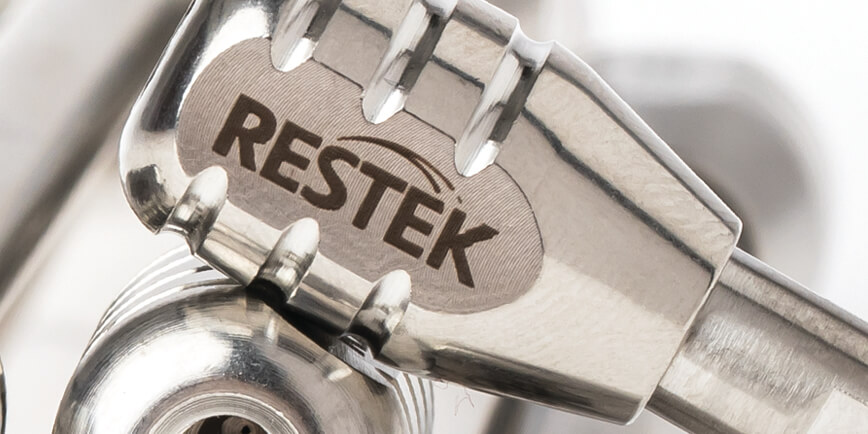
• Traps and “delays” system-related PFAS, preventing interference.
• Allows accurate identification and quantitation of trace-level PFAS in samples.
• Highly retentive—no breakthrough even with extended equilibration times.
Poly- and perfluoroalkyl substances, or PFAS, are rapidly emerging as some of the most important environmental contaminants to monitor around the world. Their widespread use and environmental persistence make them truly a global issue. Concerns over possible health risks are driving environmental scientists to look for these compounds everywhere from penguins [1] in the south to polar bears [2] in the north, and many points in between, and they are discovering the extent of PFAS contamination is literally pole to pole [3,4]. However, one other concerning place where at least some of these compounds are present is inside the very instruments used for PFAS analysis of environmental samples. Background PFAS contamination can interfere with low-level quantification requirements, which are usually in the range of parts per trillion (ppt) or below. Instrument-related background contamination can stem from LC components that contain fluoropolymers (e.g., PTFE), which can leach into mobile phase solutions. Using tubing and containers without fluorochemicals and switching instrument components to PEEK or stainless steel mitigates some of the risk of background contamination, but it does not eliminate the impact of interferences on trace-level analysis, so another solution is required.
In a standard setup, instrument-related PFAS interferences move through the system with the mobile phase and collect at the head of the analytical column between sample injections. However, adding a second column, called a “delay column,” into the mobile phase flow path immediately before the injector is an effective way catch the background PFAS before they reach the analytical column (Figure 1). In this scenario, when the sample is injected, only PFAS in the sample will focus at the head of the analytical column. Then, during the course of a gradient analysis, PFAS from the sample will begin to move through the analytical column like normal. The background PFAS trapped in the delay column during equilibration will be eluted and pass through the analytical column as well. However, the background PFAS will elute later than the sample PFAS because they entered the analytical column after the injected sample due to additional retention by the delay column prior to reaching the injector. In addition, the background PFAS never focus on the head of the analytical column because they are present in the flow path in continuum rather than as a discrete injection. The net effect is that by using a delay column you can differentiate instrument-related PFAS background contamination from target PFAS in a sample.





